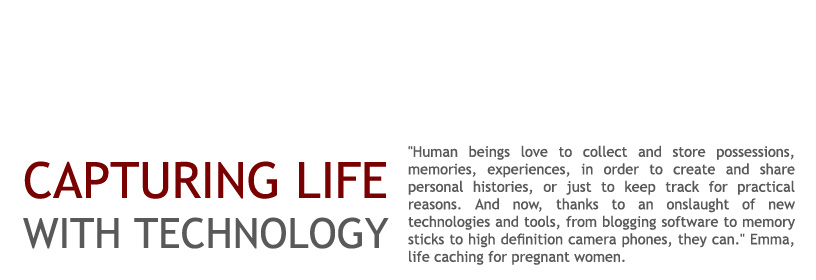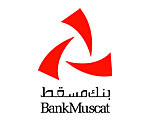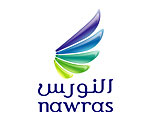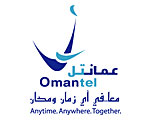Source: Trendwatching.com

The life caching trend is approaching mainstream appeal: every day brings consumers even more powerful cameraphones, even bigger memory cards and even more streamlined do-it-yourself or serviced story-telling tools.
Some of our latest learnings? Life caching is enabling Generation C to become a generation of true storytellers, helping them to visually and compellingly share their experiences with friends and family, which makes them stand out and feel special. In fact, sharing an experience may become as valuable if not more valuable than the actual experience itself. But before we go any further, let’s quickly clear up what the C Generation refers to. No, this isn’t about a new niche generation of youngsters born between May 19, 1988 and June 20, 1993; the C stands for content and anyone with even a tiny amount of creative talent can (and probably will) be part of this not-so-exclusive trend.
Ok, back to earth. Here are some of the latest life caching spottings, from statistics to new hardware to innovative business to consumer (B-2-C) experiences. Indeed, whether you’re marketing date biscuits, wide screen TVs, beach front villas, high-tech office accommodation or higher education there are lots of interesting ideas for Oman-based marketers to experiment with.
Worldwide, cameraphones now outsell digital cameras and film cameras combined and 90% of all digital consumer pictures this year will be snapped with cameraphones (source: Engadget - www.engadget.com ). There's no stopping this 'always-on-you' trend as Samsung, LG and Xcute ( www.xcutemobile.com) now all sell cameraphones in Asia that offer 5 - 7 megapixels, which is more than most traditional digital cameras. One of the new Samsung camphones even sports a 3x optical zoom lens auto focus, a flash, manual white balance, 13 different scene modes, and a widescreen 16:9 picture mode.
What's better than still images? Video! Now that vlogging ( http://en.wikipedia.org/wiki/Vlog) is becoming the new blogging (check out sites like: www.tropisms.org, www.vidblogs.com and www.vlogdir.com), may we once more point out that South Korean Pantech & Curitel ( www.curitel.com) have introduced a video-camphone, ideal for recording megapixel "camcorder-quality" video clips on the go, while Nokia (www.nokia.com) touts its new 2 megapixel N90 phone as capable of recording VHS resolution video.
How and where to accommodate the digital assets that come from living an accumulative terabyte lifestyle? Hitachi and Seagate expect to introduce a 1 terabyte (that's 1024 gigabyte!) disk drive early 2006, using 'perpendicular recording'. Even if you don't care about what that means, understanding that consumers will be able to life cache forever may expand your imagination when you start brainstorming how to capitalize on this trend.
And talking about sharing one's experiences: a slew of so called photo vaults are doing their best to render obsolete the printing and paper-based photo album business. From Kodak's EasyShare Handheld Picture Viewer to the Nikon CoolWalker, it's life caching and life sharing on the go.
Feel the above is too techy for you? Check out these life caching services, which open up a plethora of new business ventures, advertising campaign ideas and partnering opportunities. After all, life caching is all about storytelling:
Nokia & HP
Nokia has introduced a new version (1.7) of its Lifeblog software, which will work with 10 of its phones, in 15 languages. Lifeblog software lets users automatically arrange all messages, images, notes, videos and sound clips that they capture with their mobile phones into a PC based 'diary'.
Another 800 pound gorilla, HP, is getting into life caching as well, having recently developed its StoryCast software ( www.hpl.hp.com/research/storycast). The service enables users of smartphones to create stories that consist of a narrated photo-slide show, accompanied by the storyteller's voice. Using the mobile phone handset as a microphone, users speak into the phone while clicking on thumbnails of photos they want to describe or that illustrate a story. Once the handset has recorded both the audio track and the corresponding sequence of pictures, it can send the whole message to one's online account via e-mail, HTTP or MMS.
And the above is just the beginning: a crop of new life caching service companies is joining the fray, helping life cachers to not only capture and share, but even re-sell their experiences and stories:
Diets
MyFoodPhone ( www.myfoodpone.com) and Nutrax ( www.nutrax.com) are life caching based diet services: users take pictures of everything they eat with their cameraphone, and send them to their own Registered Dietician. Once a week, on a personalized web page where customers keep track of their weight and other biometric information, they'll get video feedback from their dietician (who analyzes their nutritional intake) on how to modify their eating habits. Costs: MyFoodPhone charges about RO38 a month for the service, while Nutrax offers a few cheaper options. In their own words: "Much more fun - and motivating - than pen and paper food journaling!"
Pregnancy
What better time to start life caching then when you're pregnant? Check out the Emma cellphone, a conceptual service for blogging one's pregnancy. The user captures foetus videos, pictures, heartbeat sounds and tangible movements with Emma's hand-held 'ultrasound transducer'. The user can build a blog and upload captured multi-media data onto the website to share her pregnancy and foetus information with other family members and friends.
Phone Calls
Just launched: Record My Call ( www.recordmycall.co.uk) which allows customers to dial in and record any conversation to any phone line in the UK. Callers wishing to record their conversations dial a set number, followed by the number of the person they want to speak to. The call is recorded and a PIN is issued to allow a replay of the recording which is stored for 30 days. Think calls from relatives who live far away or a client call about an important project.
Family History
eDv ( www.edv.uk.com) a personal motion picture company, produces works of art about your family, for your family. Most interesting from a life caching point of view: eDV's biography service, a bespoke film that tells the tale of one's family history. From a combination of interviews, family media and BBC archive footage, eDV will document those stories, at a cost of £2,000 (circa RO1,380) to £5,000 (circa RO3,450) for montage documentaries of archive material, to £5,000 to £40,000 (circa RO3,450 – RO27,600) for full biographical films.
Next? Story Selling instead of Storytelling!
Life caching is one of the many ways for Generation C to collect and create content. Original content. Which gets us to our customer made trend. Trying to turn life caching into mass-appeal content, aforementioned Nokia Lifeblog is broadening its reach - it's partnering with supermodel Anina for a project dubbed Fashion 360 Lifeblog, which is basically a 360 degree overview of what's happening in the world of fashion, as observed by a group of fashion industry professionals equipped with a weblog (Typepad) and a Nokia telephone outfitted with Lifeblog software. In Nokia's own words: "Thanks to the Fashion 360 project, each spoke in the wheel of fashion (model, agency, designer, journalist, photographer, etc.) is accessible from your PC or mobile phone!" They covered Paris Fashion Week this autumn.
Another Lifeblog project is MTV:starzine ( www.starzine.mtv.co.uk) billed as Europe's first magazine to be created entirely by its readers (strapline: 'Snap, Send, Shine - Fame is just a click away'). MTV viewers are invited to contribute to the online magazine by sending in their mobile phone photographs with accompanying copy.
Breaking News
And how about breaking news content? If a life cacher finds him/herself in the middle of a breaking news story, his pictures, recordings and videos may be of interest (and value) to many. Quite a few media companies, from the BBC to OhMyNews ( http://english.ohmynews.com ), are now actively buying this content from citizen journalists. Next? Consumer-agents who represent Generation C, making sure active life cachers get the best price for their 'work'. Case in point:
Brand new UK-based Scoopt ( www.scoopt.com) a 'civic media press agency' helps members of the public sell photographs and videos of newsworthy events to the press. In their own words: "we bridge the gap between amateur photographer and picture desk - and by 'amateur', we mean anybody with a digital camera or a cameraphone who just happens to be in the right place at the right time. When you send Scoopt a photo, you automatically grant us an exclusive worldwide license to market that photo for a period of six months. During this six-month period, you agree not to publish the photo anywhere else. When the six months are up, the license becomes non-exclusive. Scoopt also accepts video footage for distribution. All licensing and assignment fees will be split equally between you and Scoopt." Obviously this will work best if there's a real scoop: with so many citizen journalists now crowding major events, a lot of footage will be duplicated many times over.
Opportunities
With virtually everything being digitized, and with affordable yet professional storage, capturing, management and story telling tools in the hands of millions, the opportunities from a marketing or service-creation angle are endless. We believe consumers will come to expect that they can relive and share every experience they've ever had and have instant access to any life collection they've ever built, giving them a bit of grip on lives that are filled with more content, experiences and data than ever before. And that spells big bucks for any marketer or company smart enough to provide consumers with the means to cache, if not resell their lives








